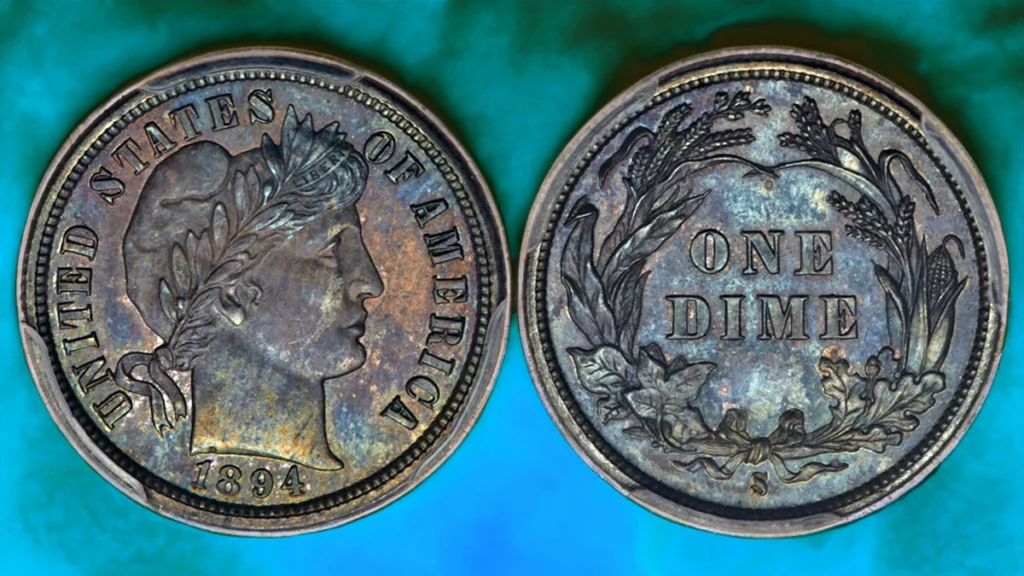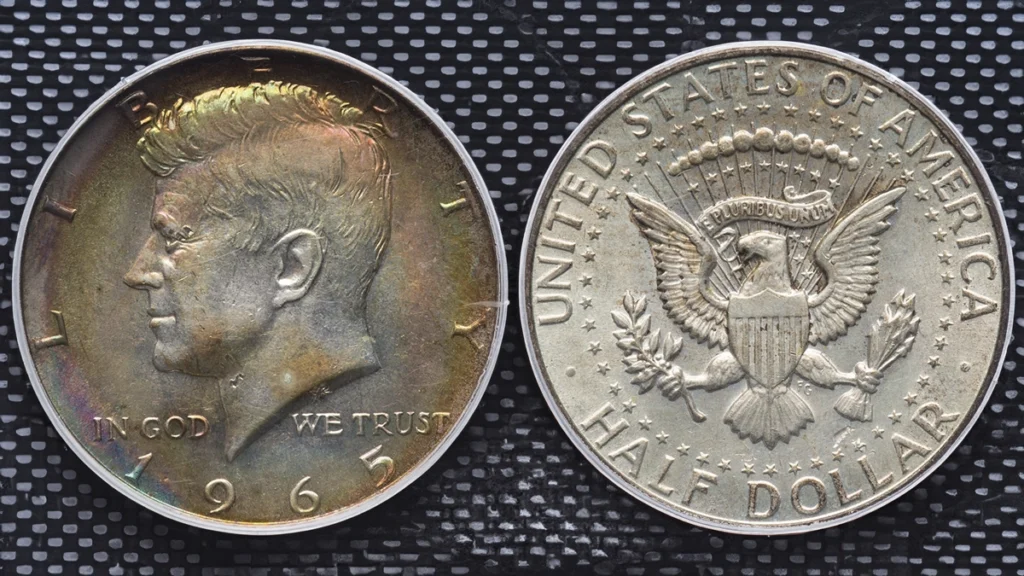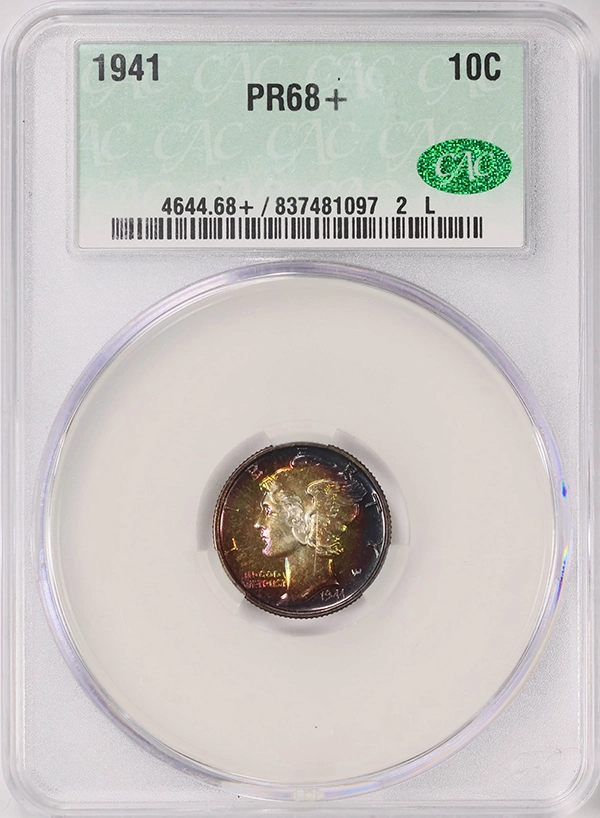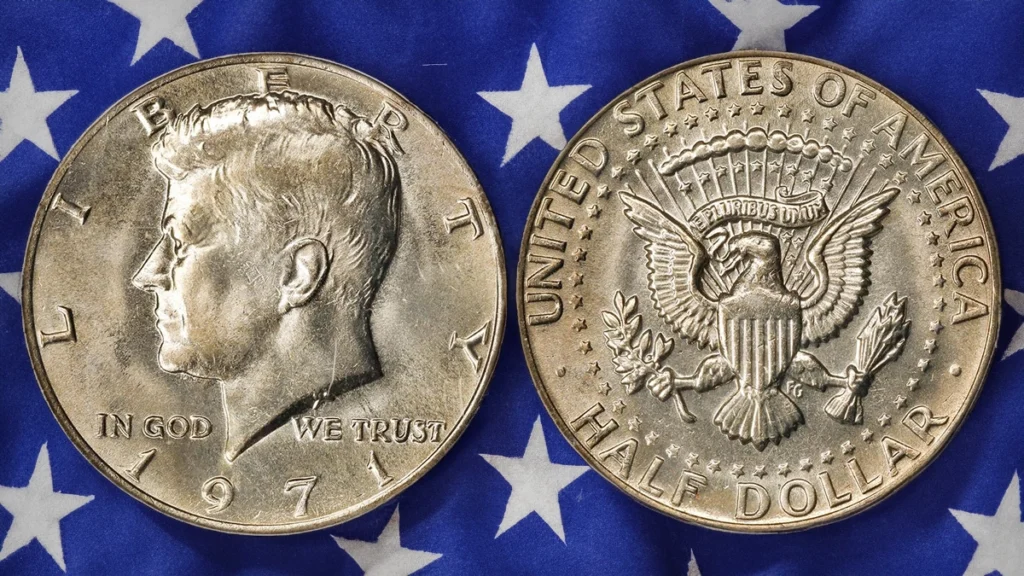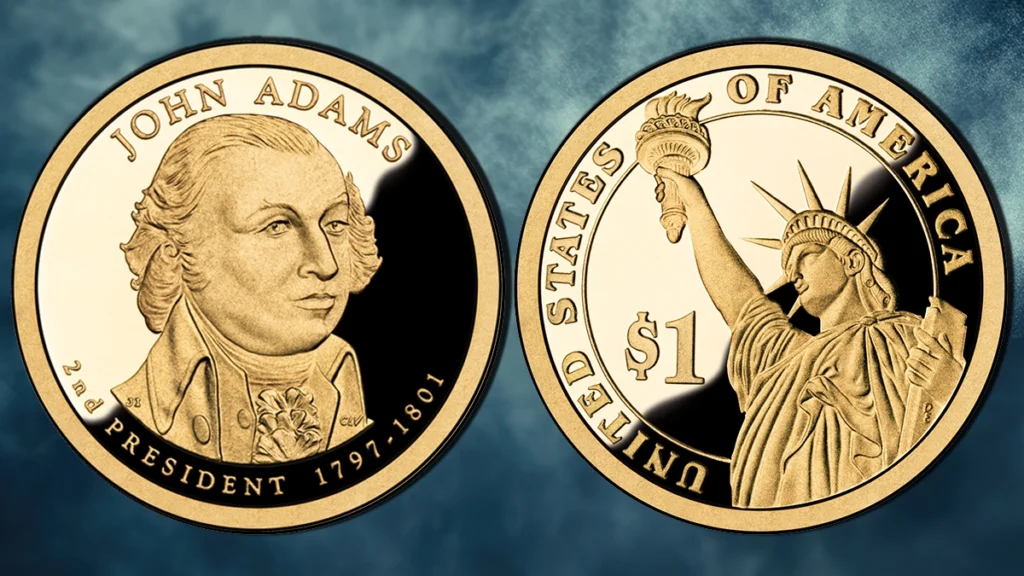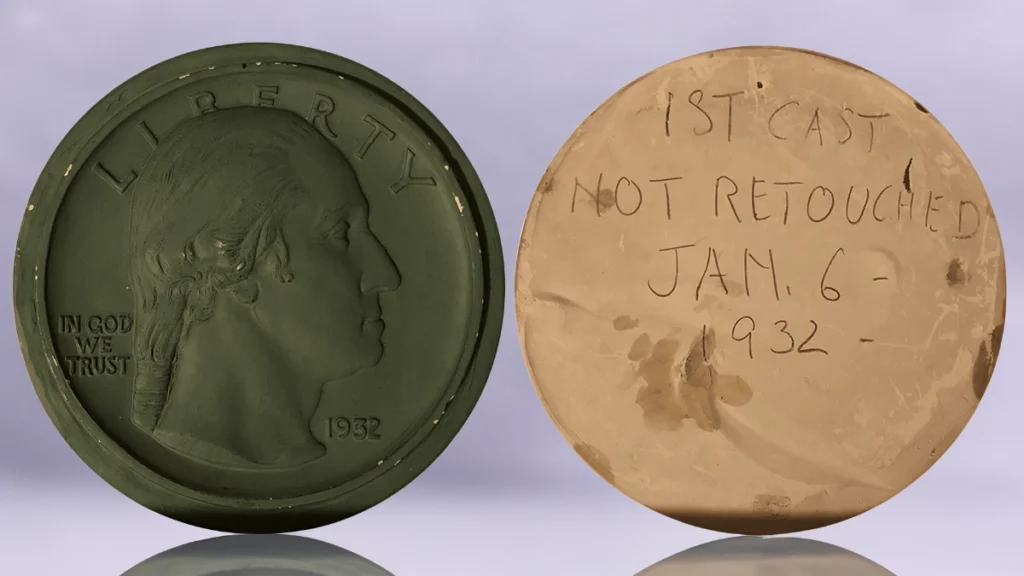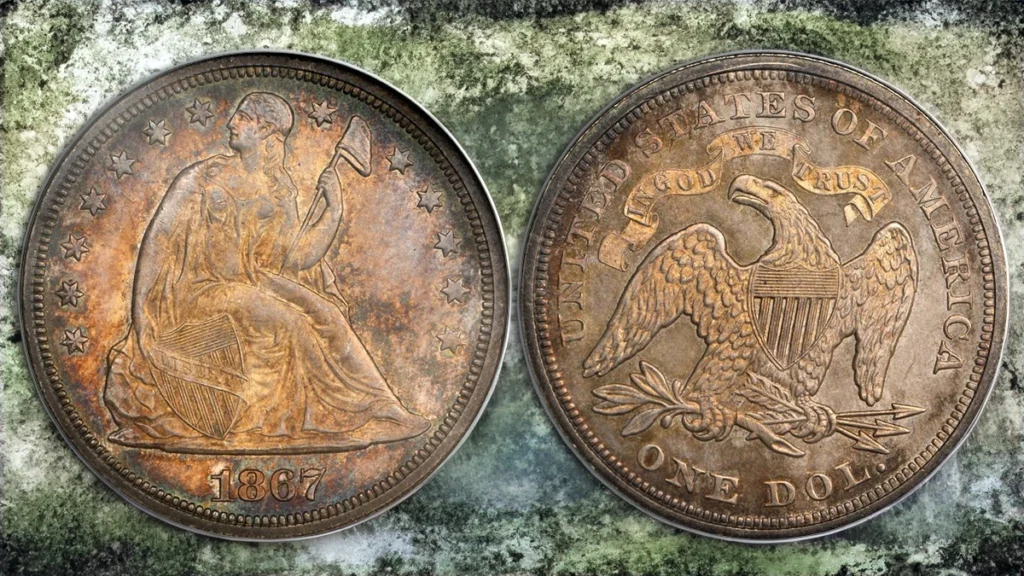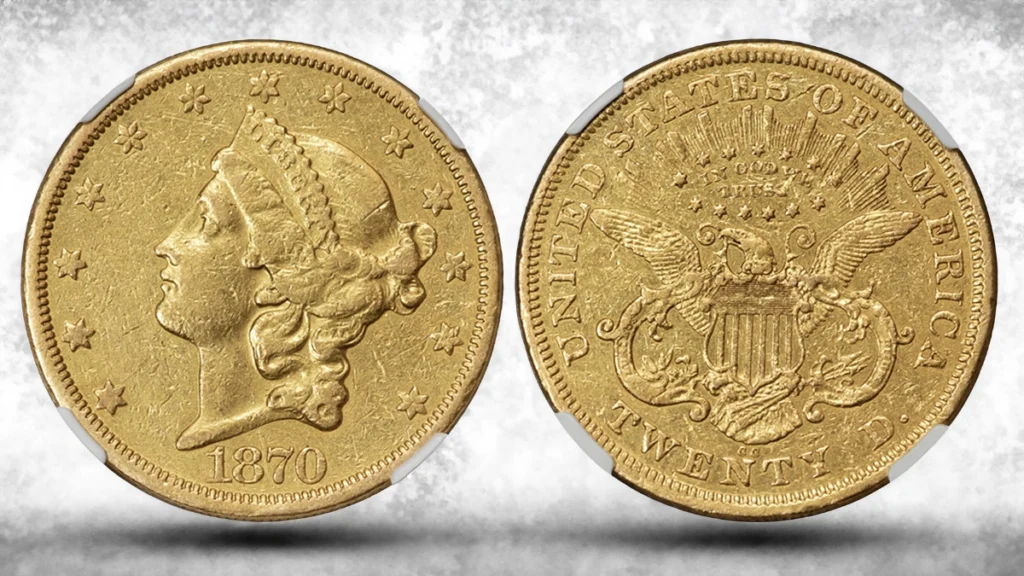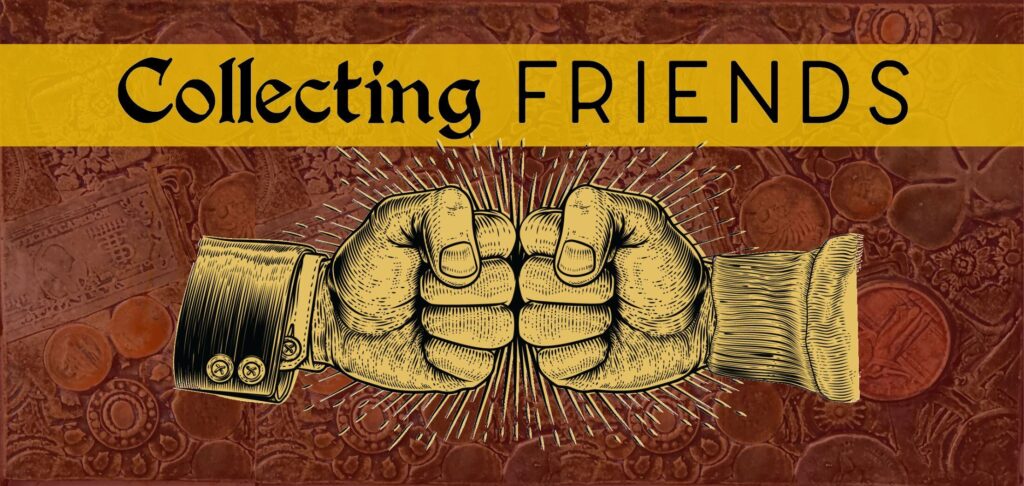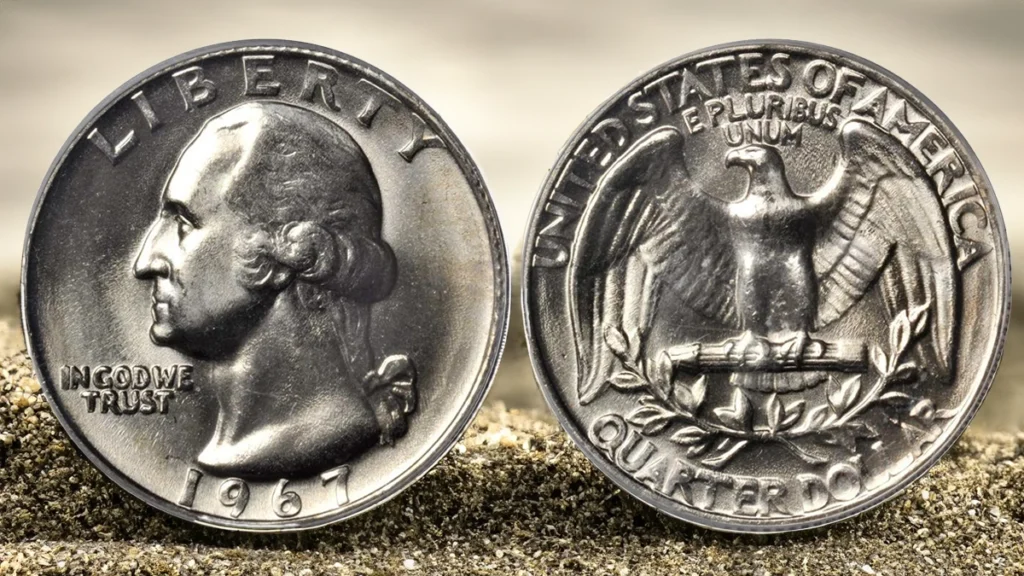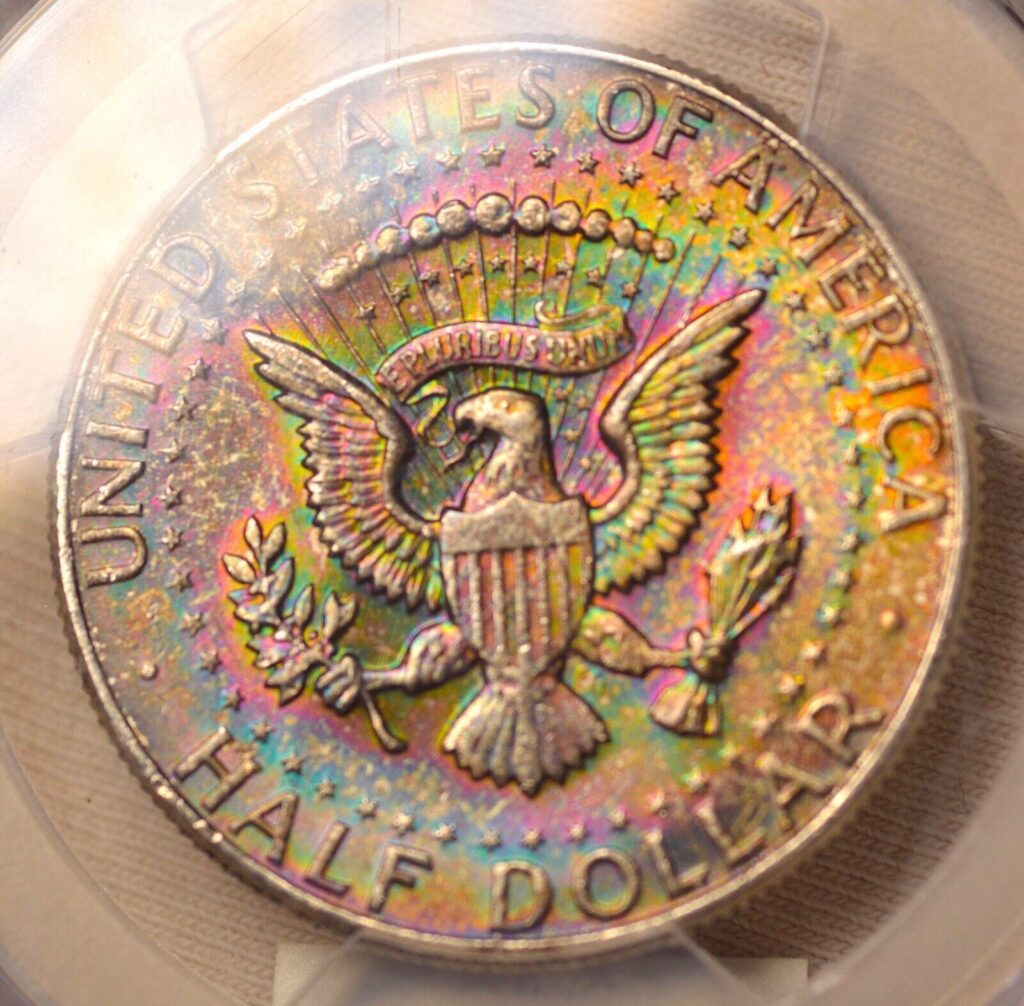50 State Quarters, 1999-2008 | CoinWeek
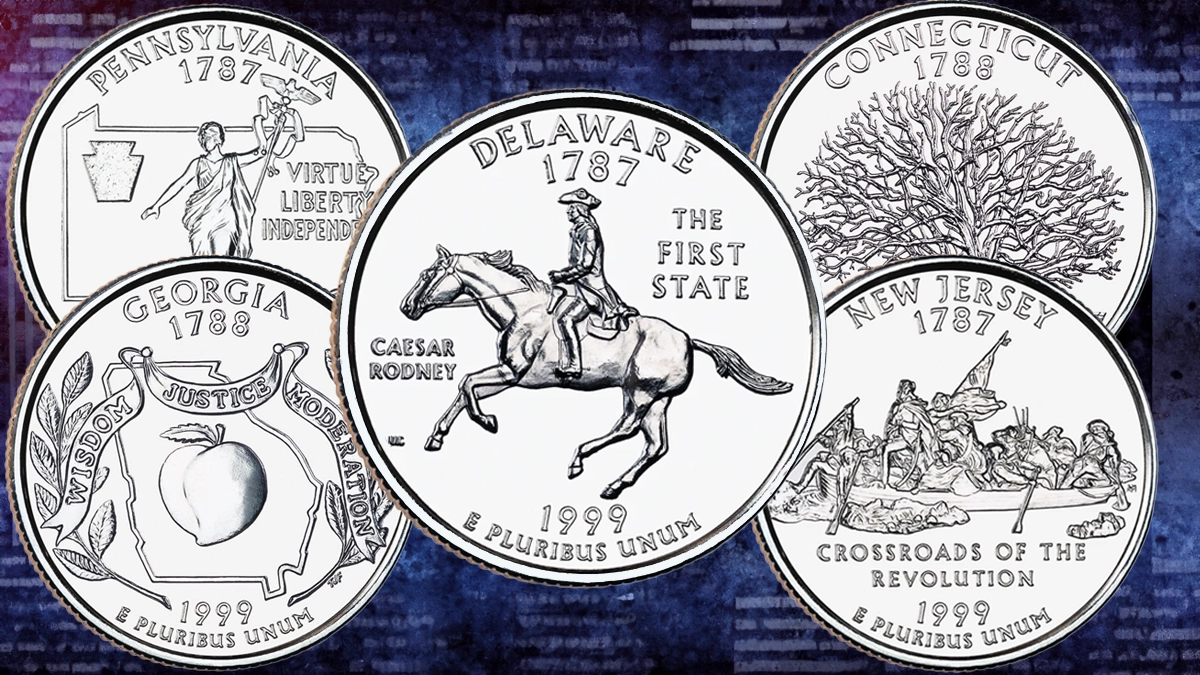
By Charles Morgan and Hubert Walker for CoinWeek Notes …..
The circulating commemorative 50 State Quarters Program called for the issue of five distinct quarter designs each year for 10 years, with one design per state issued in the order of each state’s admission into the Union. It was the goal of the program to promote public knowledge of the individual states, their history and geography, and the national heritage. Authorized by the 50 States Commemorative Coin Program Act (Public Law 105-124), it was signed into law by President William Jefferson “Bill” Clinton on December 1, 1997.
The Act was shepherded through Congress by Republican Representative Mike Castle of Delaware, a key figure in modern American numismatic legislation for the two decades he served in the House. It was also supported by the Treasury Department, the United States Mint, and many stakeholders in the American coin hobby – including Harvey Stack, Q. David Bowers, and many others.
Designs appeared on the reverse of each respective coin, while the familiar John Flanagan portrait of President George Washington remained on the obverse, which was modified to accommodate the legend UNITED STATES of AMERICA, the denomination QUARTER DOLLAR, and the motto E PLURIBUS UNUM). On Washington Quarters dated 1998 and earlier, these inscriptions were on the reverse.
In the program’s first several years, states were invited to submit their own designs, which would then be modified by the Mint’s engraving department before being sent to both the Commission of Fine Arts (CFA) and the Citizens Coinage Advisory Committee (CCAC) for review and to the Secretary of the Treasury for final approval. Each state handled the process in its own way, with the early designs selected from statewide competitions. Congress made sure that the states didn’t have free rein, however, and the inclusion of controversial subjects was prohibited. A key reason for this provision was to ban designs that promoted the Confederacy.
In 2005, the Mint revised the rules and invited states to supply them with three to five concepts each, which would then be translated into designs by the Mint’s engraving department. This change occurred because of the public dispute over design authorship following the release of the 2003 Missouri State Quarter.
A New Era in American Coinage
Outside of the two-year Bicentennial issue of Jack Ahr’s “Drummer Boy“, the design of the quarter had remained unchanged since the debut of Flanagan’s Washington Quarter design in 1932. George Washington was chosen to represent the quarter to mark the 200th anniversary of his birth, following a precedent set 23 years earlier when President Abraham Lincoln was placed on the penny to mark the 100th anniversary of his birth. The continuation of this precedent spelled the end of Lady Liberty on American coins. In 1938, Thomas Jefferson joined the ranks, followed by Franklin D. Roosevelt in 1946, and Benjamin Franklin in 1948.
Of that first wave of statesmen circulating coins, only Franklin has been removed, losing his spot on the 50-cent piece in favor of the slain John F. Kennedy. As America has elevated these men to a status far beyond their original electoral mandate, it’s safe to assume that we will not see the likes of Liberty again.
But reverses were different. Not only did the Bicentennial reverses of 1975-1976 offer a temporary change from the traditional designs of the Washington Quarter, Kennedy Half Dollar, and Eisenhower Dollar, but the Lincoln Wheat Cent design was revised in 1959 to mark the 150th Anniversary of Lincoln’s birth. With the 50 State Quarters® Program, the Mint could introduce new designs to the American public without upsetting people with the removal of a “beloved” president.
Both hobby leaders and the Mint saw the release of the coins as a way to reintroduce the public at large to collectible coins and potentially reinvigorate the coin-collecting hobby, which had for years seen its focus shift from a popular pastime to an investment-driven industry. As each coin entered circulation through local banks, Americans were assured that they would encounter every design and could even request rolls of uncirculated coins from banks as they were being released. In addition, the Mint offered a number of ways for collectors to purchase the coins at a premium.
Order of Release
1999 State Quarters
The launch of the 50 State Quarters Program was met with great public enthusiasm. On the first night of the 1999 Delaware State Quarter’s release, television coin shopping programs were marketing uncirculated rolls for as high as $99. Within weeks, bank branches throughout the country began to receive large quantities of the new designs. This pattern repeated every few months as new designs were issued on schedule.
As much attention was placed on the new program, the designs of the Delaware, Pennsylvania, New Jersey, Georgia, and Connecticut State Quarters were well-known and remain synonymous with the series. The same can’t be said for many of the designs that followed.
Mintages for each design varied based on orders received by the Federal Reserve. The New Jersey design had the lowest mintage, while more than 1.3 billion Connecticut State Quarters, the last design of the year, were struck.
The Mint had offered Proof Sets in Clad and Silver each year since 1992. Due to cost, the clad sets always outsell the silver versions, and in 1999, the clad set outsold the silver set by a factor of 4.6:1. By 2000, collectors who were late to the game began to seek out the 1999 Silver Proof Sets, pushing the price over $100 by 2001. For a time, the 1999 Silver Proof Set was one of the few modern Proof Sets to be traded on the secondary market for more than its issue price.
|
1999 Delaware State Quarter |
|||
| Unc. P | Unc. D | Silver Proof S | Clad Proof S |
| 373,400,000 | 401,424,000 | 804,565 | 3,713,359 |
|
1999 Pennsylvania State Quarter |
|||
| Unc. P | Unc. D | Silver Proof S | Clad Proof S |
| 349,000,000 | 358,332,000 | 804,565 | 3,713,359 |
|
1999 New Jersey State Quarter |
|||
| Unc. P | Unc. D | Silver Proof S | Clad Proof S |
| 363,200,000 | 299,028,000 | 804,565 | 3,713,359 |
|
1999 Georgia State Quarter |
|||
| Unc. P | Unc. D | Silver Proof S | Clad Proof S |
| 451,188,000 | 488,744,000 | 804,565 | 3,713,359 |
|
1999 Connecticut State Quarter |
|||
| Unc. P | Unc. D | Silver Proof S | Clad Proof S |
| 688,744,000 | 657,880,000 | 804,565 | 3,713,359 |
2000 State Quarters

Collector enthusiasm for the State Quarters picked up steam in 2000, in part because of the novelty of the once-futuristic “2000” date but also because the public had come into contact with the new coin reverses, saw the various State Quarters ads in newspapers and on TV, and wanted to collect them – either for themselves or for their children and grandchildren.
For example, here’s an ad for the 1999 Pennsylvania State Quarter featuring Kermit the Frog from Jim Henson’s Muppets:
But back to 2000.
Those not from New England may have been confused by “The Old Man of the Mountain”. This natural feature, made up of a series of granite ledges, protruded from the cliff face of Cannon Mountain in New Hampshire. Its uncanny visage was revered by indigenous tribes before becoming an icon of independence for New England settlers. Sadly, three years after the release of the 2000 New Hampshire State Quarter, the rock formation collapsed. Its profile, however, remains part of New Hampshire’s identity.
The 2000 Virginia and Massachusetts State Quarters were the year’s standout designs. The Virginia issue had a mintage of over 1.5 billion coins, making it the most common of the year’s quarters.
Year-to-year Proof sales were up in both Clad and Silver formats.
|
2000 Massachusetts State Quarter |
|||
| Unc. P | Unc. D | Silver Proof S | Clad Proof S |
| 628,600,000 | 535,184,000 | 965,421 | 4,020,172 |
|
2000 Maryland State Quarter |
|||
| Unc. P | Unc. D | Silver Proof S | Clad Proof S |
| 678,200,000 | 556,532,000 | 965,421 | 4,020,172 |
|
2000 South Carolina State Quarter |
|||
| Unc. P | Unc. D | Silver Proof S | Clad Proof S |
| 742,576,000 | 566,208,000 | 965,421 | 4,020,172 |
|
2000 New Hampshire State Quarter |
|||
| Unc. P | Unc. D | Silver Proof S | Clad Proof S |
| 673,040,000 | 495,976,000 | 965,421 | 4,020,172 |
|
2000 Virginia State Quarter |
|||
| Unc. P | Unc. D | Silver Proof S | Clad Proof S |
| 943,000,000 | 651,616,000 | 965,421 | 4,020,172 |
2001 State Quarters

2001 marked the beginning of the George W. Bush Administration, which would span the remaining eight years of the 50 State Quarters Program. In March, the United States entered into a recession caused by an economic downturn in the tech sector (the busting of the first “dot-com bubble”). While it’s hard to imagine where the global economy would be without e-commerce, at the turn of the millennium, the technology that would drive the 21st century was still in its early stages.
The September 11 terrorist attacks on New York City and the nation’s capitol shifted America’s focus to security, recovery, and the Global War on Terror. These priorities would add trillions of dollars to the national debt and yield mixed results.
The 2001 State Quarters feature the series’ best designs, with Vermont, Kentucky, and Rhode Island being standouts. The symbolic meaning of the 2001 New York State Quarter shifted from a celebration of the Empire State to a symbol of America’s solidarity with the people of New York in their time of need.
|
2001 New York State Quarter |
|||
| Unc. P | Unc. D | Silver Proof S | Clad Proof S |
| 655,400,000 | 619,640,000 | 889,697 | 3,094,140 |
|
2001 North Carolina State Quarter |
|||
| Unc. P | Unc. D | Silver Proof S | Clad Proof S |
| 627,600,000 | 427,876,000 | 889,697 | 3,094,140 |
|
2001 Rhode Island State Quarter |
|||
| Unc. P | Unc. D | Silver Proof S | Clad Proof S |
| 423,000,000 | 447,100,000 | 889,697 | 3,094,140 |
|
2001 Vermont State Quarter |
|||
| Unc. P | Unc. D | Silver Proof S | Clad Proof S |
| 423,400,000 | 459,404,000 | 889,697 | 3,094,140 |
|
2001 Kentucky State Quarter |
|||
| Unc. P | Unc. D | Silver Proof S | Clad Proof S |
| 353,000,000 | 370,564,000 | 889,697 | 3,094,140 |
2002 State Quarters

Tennessee, Ohio, Louisiana, Indiana, and Mississippi got their quarters in 2002. Other than the floral design on the 2002 Mississippi Quarter, each of the issues was imbued with an artistic style that resembled royalty-free clip art. Trumpets appear on the Tennessee and the Louisiana quarters, both celebrating their respective musical legacies. Ohio continued its weird competition with North Carolina over who can lay claim to the legacy of the Wright Brothers and added an astronaut. Infamous coin dealer Tom Noe and legendary Coin World Editor Beth Deisher both served on that state’s design committee.
Mintages for the 2002 business strikes were slightly lower than the 1999 issues, owed largely to a decrease in demand for new coins. The Proof mintages held firm, more or less.
|
2002 Tennessee State Quarter |
|||
| Unc. P | Unc. D | Silver Proof S | Clad Proof S |
| 361,600,000 | 286,468,000 | 892,229 | 3,084,245 |
|
2002 Ohio State Quarter |
|||
| Unc. P | Unc. D | Silver Proof S | Clad Proof S |
| 217,200,000 | 414,832,000 | 892,229 | 3,084,245 |
|
2002 Louisiana State Quarter |
|||
| Unc. P | Unc. D | Silver Proof S | Clad Proof S |
| 362,000,000 | 402,204,000 | 892,229 | 3,084,245 |
|
2002 Indiana State Quarter |
|||
| Unc. P | Unc. D | Silver Proof S | Clad Proof S |
| 362,600,000 | 372,200,000 | 892,229 | 3,084,245 |
|
2002 Mississippi State Quarter |
|||
| Unc. P | Unc. D | Silver Proof S | Clad Proof S |
| 290,000,000 | 289,600,000 | 892,229 | 3,084,245 |
2003 State Quarters

Three of the 2003 State Quarters honor historical figures. Lincoln is framed by the shape of Illinois while Helen Keller is honored on the Alabama State Quarter along with her name spelled in Braille. The Missouri quarter features Lewis, Clark, and the enslaved York paddling a pirogue down the Mississippi River.
The Maine design was adapted from work by Colorado artist Daniel J. Carr, who collaborated with two Mainers to qualify his submission. Carr’s design is flipped on the coin, his depiction of the Pemaquid Lighthouse and the Victory Chimes ship being truer to life. The Liberties that the Mint took to strike the coin made the artist and local media bristle.
A similar design controversy followed the Missouri State Quarter when artist Paul Jackson’s design was “dumbed down” for the coin. These public spats caused the Mint’s leadership to rethink the design process as mentioned above.
The number of 2003 quarters struck for circulation was the lowest in the series. Coupled with the decrease in demand for business strikes in commerce was a waning of attention by the broader American public. Collectors, however, continued to enthusiastically collect.
|
2003 Illinois State Quarter |
|||
| Unc. P | Unc. D | Silver Proof S | Clad Proof S |
| 225,800,000 | 237,400,000 | 1,125,755 | 3,408,516 |
|
2003 Alabama State Quarter |
|||
| Unc. P | Unc. D | Silver Proof S | Clad Proof S |
| 225,000,000 | 232,400,000 | 1,125,755 | 3,408,516 |
|
2003 Maine State Quarter |
|||
| Unc. P | Unc. D | Silver Proof S | Clad Proof S |
| 217,400,000 | 231,400,000 | 1,125,755 | 3,408,516 |
|
2003 Missouri State Quarter |
|||
| Unc. P | Unc. D | Silver Proof S | Clad Proof S |
| 225,000,000 | 228,200,000 | 1,125,755 | 3,408,516 |
|
2003 Arkansas State Quarter |
|||
| Unc. P | Unc. D | Silver Proof S | Clad Proof S |
| 228,000,000 | 229,800,000 | 1,125,755 | 3,408,516 |
2004 State Quarters

Florida, Iowa, Texas, Michigan, and Wisconsin got their turn in 2004. And save for the Iowa design, which wasn’t all that good to begin with, the “clip-artification” of American coins continued. The Texas design is particularly garish and unbalanced. The Florida coin looks like three symbols were pulled together from The Print Shop computer program.
Business-strike mintages continued to be unusually low for the series, but demand for the Silver Proof Set was nearly double what it was when the series began in 1999.
|
2004 Michigan State Quarter |
|||
| Unc. P | Unc. D | Silver Proof S | Clad Proof S |
| 233,800,000 | 225,800,000 | 1,789,344 | 2,761,163 |
|
2004 Florida State Quarter |
|||
| Unc. P | Unc. D | Silver Proof S | Clad Proof S |
| 240,200,000 | 241,600,000 | 1,789,344 | 2,761,163 |
|
2004 Texas State Quarter |
|||
| Unc. P | Unc. D | Silver Proof S | Clad Proof S |
| 278,800,000 | 263,000,000 | 1,789,344 | 2,761,163 |
|
2004 Iowa State Quarter |
|||
| Unc. P | Unc. D | Silver Proof S | Clad Proof S |
| 213,800,000 | 251,400,000 | 1,789,344 | 2,761,163 |
|
2004 Wisconsin State Quarter |
|||
| Unc. P | Unc. D | Silver Proof S | Clad Proof S |
| 226,400,000 | 226,800,000 | 1,125,755 | 2,761,163 |
2005 State Quarters

Five states admitted into the Union at the most turbulent time in American history were honored with quarters in 2005. California became a state a few short years after it was taken from Mexico. Minnesota and Oregon gained admission in 1858 and 1859, throwing the balance of free and slave states out of balance. Kansas was admitted as a free state in 1861 after eight Southern states seceded from the Union, and West Virginia cleaved itself from the “Old Dominion” in the Civil War’s third year. The designs are generally improved over the 2003-2004 releases. West Virginia’s quarter stands out as one of the series’ best.
|
2005 California State Quarter |
|||||
| Unc. P | Unc. D | Specimen P | Specimen D | Silver Proof S | Clad Proof S |
| 257,200,000 | 263,200,000 | 1,160,000 | 1,160,000 | 1,606,970 | 3,262,000 |
|
2005 Minnesota State Quarter |
|||||
| Unc. P | Unc. D | Specimen P | Specimen D | Silver Proof S | Clad Proof S |
| 239,600,000 | 248,400,000 | 1,160,000 | 1,160,000 | 1,606,970 | 3,262,000 |
|
2005 Oregon State Quarter |
|||||
| Unc. P | Unc. D | Specimen P | Specimen D | Silver Proof S | Clad Proof S |
| 316,200,000 | 404,000,000 | 1,160,000 | 1,160,000 | 1,606,970 | 3,262,000 |
|
2005 Kansas State Quarter |
|||||
| Unc. P | Unc. D | Specimen P | Specimen D | Silver Proof S | Clad Proof S |
| 263,400,000 | 300,000,000 | 1,160,000 | 1,160,000 | 1,606,970 | 3,262,000 |
|
2005 West Virginia State Quarter |
|||||
| Unc. P | Unc. D | Specimen P | Specimen D | Silver Proof S | Clad Proof S |
| 365,400,000 | 356,200,000 | 1,160,000 | 1,160,000 | 1,606,970 | 3,262,000 |
2006 State Quarters

The 2006 State Quarters feature the busiest designs of the series and unintentionally preview the America the Beautiful Quarters series starting in 2010. Sun rays on the Nebraska, Nevada, and North Dakota coins speak to the “sameness” of the designs. Mount Rushmore almost never conveys well on a coin (except on the award-winning 2013 Mount Rushmore National Memorial Quarter reverse by Mint Chief Engraver Joseph Menna), and on the South Dakota coin, the monolithic sculpture is surmounted by an impossibly large bird. Now that we think of it, there are mountains on every one of the 2006 quarters.
|
2006 Nevada State Quarter |
|||||
| Unc. P | Unc. D | Specimen P | Specimen D | Silver Proof S | Clad Proof S |
| 277,000,000 | 312,800,000 | 847,361 | 847,361 | 1,585,008 | 2,882,428 |
|
2006 Nebraska State Quarter |
|||||
| Unc. P | Unc. D | Specimen P | Specimen D | Silver Proof S | Clad Proof S |
| 318,000,000 | 273,000,000 | 847,361 | 847,361 | 1,585,008 | 2,882,428 |
|
2006 Colorado State Quarter |
|||||
| Unc. P | Unc. D | Specimen P | Specimen D | Silver Proof S | Clad Proof S |
| 274,800,000 | 294,200,000 | 847,361 | 847,361 | 1,585,008 | 2,882,428 |
|
2006 North Dakota State Quarter |
|||||
| Unc. P | Unc. D | Specimen P | Specimen D | Silver Proof S | Clad Proof S |
| 305,800,000 | 359,000,000 | 847,361 | 847,361 | 1,585,008 | 2,882,428 |
|
2006 South Dakota State Quarter |
|||||
| Unc. P | Unc. D | Specimen P | Specimen D | Silver Proof S | Clad Proof S |
| 245,000,000 | 265,800,000 | 847,361 | 847,361 | 1,585,008 | 2,882,428 |
2007 State Quarters

In 2007, quarters honoring Wyoming, Utah, Montana, Washington, and Idaho were issued. The Utah design honors the driving of the golden spike, which marked the completion of the first transcontinental railroad in the United States. Beasts, fish, and fowl are emblazoned on the other designs. The Wyoming quarter features a cowboy and horse in silhouette – a United States Mint first.
Mintages for the year were generally kept under 300 million per branch mint.
|
2007 Montana State Quarter |
|||||
| Unc. P | Unc. D | Specimen P | Specimen D | Silver Proof S | Clad Proof S |
| 257,200,000 | 263,200,000 | 895,628 | 895,628 | 1,313,481 | 2,374,778 |
|
2007 Washington State Quarter |
|||||
| Unc. P | Unc. D | Specimen P | Specimen D | Silver Proof S | Clad Proof S |
| 265,200,000 | 280,000,000 | 895,628 | 895,628 | 1,313,481 | 2,374,778 |
|
2007 Idaho State Quarter |
|||||
| Unc. P | Unc. D | Specimen P | Specimen D | Silver Proof S | Clad Proof S |
| 294,600,000 | 286,800,000 | 895,628 | 895,628 | 1,313,481 | 2,374,778 |
|
2007 Wyoming State Quarter |
|||||
| Unc. P | Unc. D | Specimen P | Specimen D | Silver Proof S | Clad Proof S |
| 243,600,000 | 320,800,000 | 895,628 | 895,628 | 1,313,481 | 2,374,778 |
|
2007 Utah State Quarter |
|||||
| Unc. P | Unc. D | Specimen P | Specimen D | Silver Proof S | Clad Proof S |
| 255,000,000 | 253,200,000 | 895,628 | 895,628 | 1,313,481 | 2,374,778 |
2008 State Quarters

The 50 State Quarters Program concluded in 2008 with quarters honoring the 46th through 50th states. The designs were pleasing overall, with the Arizona and Oklahoma reverses being the most pleasing.
Following the conclusion of the program, Congress authorized the Mint to strike six designs in 2009 to recognize the District of Columbia and the five American territories. While a separate series, the obverse and reverse design formats mirror those of this program. In 2010, the United States Mint would again revise the Flanagan obverse to accommodate the America the Beautiful Quarter reverses.
Trivia Question:
Which of the 50 State Quarters had the lowest circulation-strike mintage?
Answer:
The 2008-D Oklahoma Quarter, which is the only State Quarter with a mintage under 200 million.
|
2008 Oklahoma State Quarter |
|||||
| Unc. P | Unc. D | Specimen P | Specimen D | Silver Proof S | Clad Proof S |
| 222,000,000 | 194,600,000 | 745,464 | 745,464 | 1,192,908 | 2,078,112 |
|
2008 New Mexico State Quarter |
|||||
| Unc. P | Unc. D | Specimen P | Specimen D | Silver Proof S | Clad Proof S |
| 244,200,000 | 244,400,000 | 745,464 | 745,464 | 1,192,908 | 2,078,112 |
|
2008 Arizona State Quarter |
|||||
| Unc. P | Unc. D | Specimen P | Specimen D | Silver Proof S | Clad Proof S |
| 244,600,000 | 265,000,000 | 745,464 | 745,464 | 1,192,908 | 2,078,112 |
|
2008 Alaska State Quarter |
|||||
| Unc. P | Unc. D | Specimen P | Specimen D | Silver Proof S | Clad Proof S |
| 251,800,000 | 254,000,000 | 745,464 | 745,464 | 1,192,908 | 2,078,112 |
|
2008 Hawaii State Quarter |
|||||
| Unc. P | Unc. D | Specimen P | Specimen D | Silver Proof S | Clad Proof S |
| 254,000,000 | 263,600,000 | 745,464 | 745,464 | 1,192,908 | 2,078,112 |
Exclusive Coverage on CoinWeek
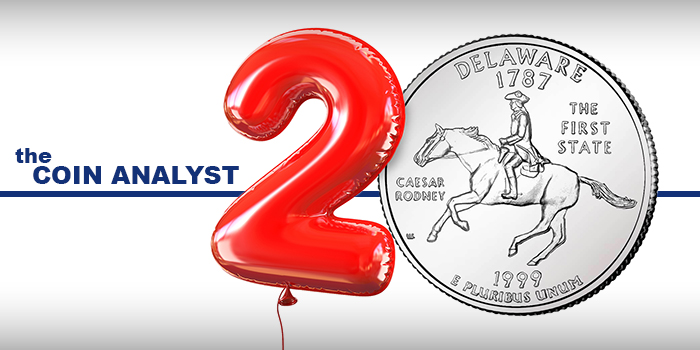
In 2018, CoinWeek contributor Louis Golino (“The Coin Analyst”) examined the impact of the program on the hobby and looked at the lack of premiums on clad State Quarters.

Filling in for Louis, CoinWeek writer Joshua-McMorrow Hernandez took a look at the market for 50 States Quarters and associated numismatic products back in 2016.
Josh also wrote about the replacement of Confederate symbols and paraphernalia from Congressional spaces that same year.
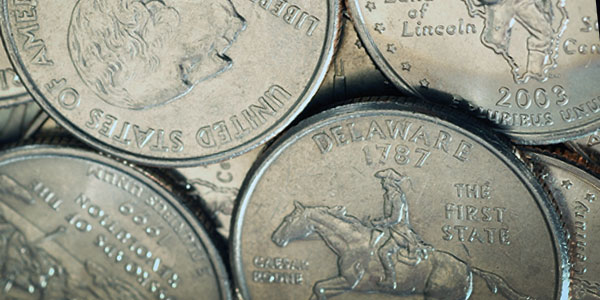
A Co-Founder of Stack’s Bowers Galleries and one of the players in the creation of the 50 State Quarters Program, the late Harvey Stack lamented the fact that State Quarters don’t show up in pocket change as much as they used to.
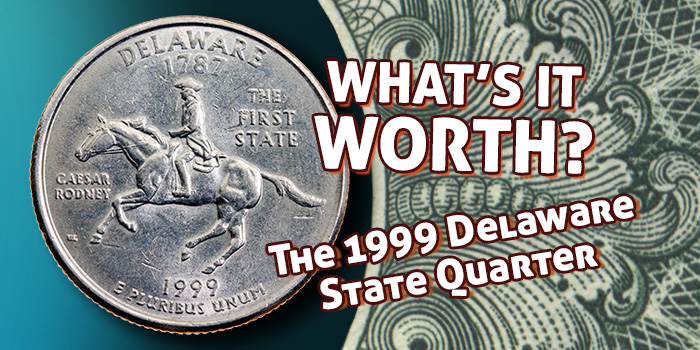
CoinWeek’s Charles Morgan and Hubert Walker focus on the contemporary market for the 1999 Delaware Quarter – the first in the series.
Charles and Hubert also wrote about the “real” value of a State Quarter.
CoinWeek Podcast
In Episode 6 of the CoinWeek Podcast, Charles spoke with former Mint Director Philip N. Diehl about the 50 State Quarters and other programs initiated during Diehl’s pivotal tenure at the United States Mint.
Common Obverse Designers
American sculptor John Flanagan’s work in the medallic and metal arts ranks him as one of the best artists of his generation. For generations of coin collectors, he is best known for his Washington Quarter design (View Designer’s Profile).
William Cousins worked at the Franklin Mint from 1967 through 1990, rising to be Director of Sculpture by his departure. He began working at the United States Mint as a sculptor-engraver in 1990 and retired in 2000. Cousins adjusted Flanagan’s effigy of George Washington to better fit in the more limited space on the 50 State Quarters obverse.
Coin Specifications
| 50 State Quarters | |
| Years of Issue: | 1999-2008 |
| Mintage (Circulation): | High: 943,000,000 (2000-P Virginia); Low: 194,600,000 (2008-D Oklahoma) |
| Mintage (Proof): | High: 4.020,172 (2000); Low: 2,078,112 (2008) |
| Mintage (Silver Proof): | High: 1,192,908 (2008); Low: 804,565 (1999) |
| Alloy: | Clad: Outer layers of .750 copper, .250 nickel bonded to pure copper core; Silver: .900 silver, .100 copper |
| Weight: | 6.25 |
| Diameter: | 24.30 mm |
| Edge: | Reeded |
| OBV Designer: | John Flanagan |
* * *
Additional References
Bowers, Q. David. A Guide Book of United States Washington and State Quarters. Whitman Publishing.
Yeoman, R.S., and Jeff Garrett (editor). The Official Red Book: A Guide Book of United States Coins. Whitman Publishing.
* * *
The post 50 State Quarters, 1999-2008 | CoinWeek appeared first on CoinWeek: Rare Coin, Currency, and Bullion News for Collectors.


